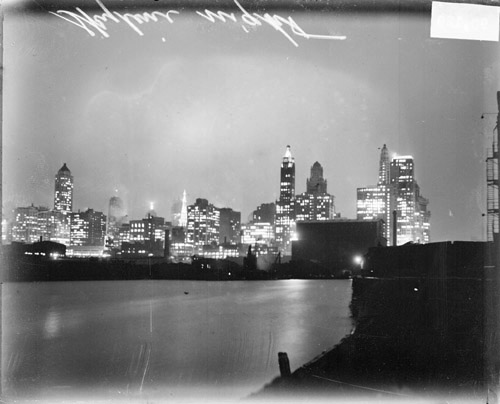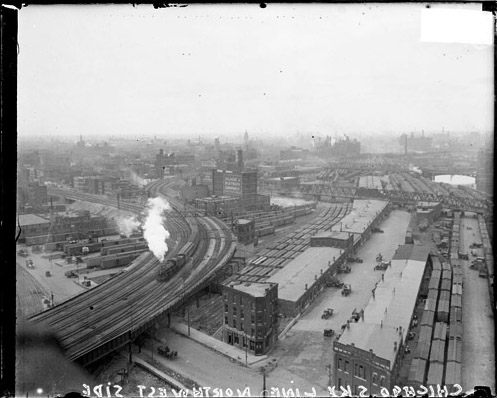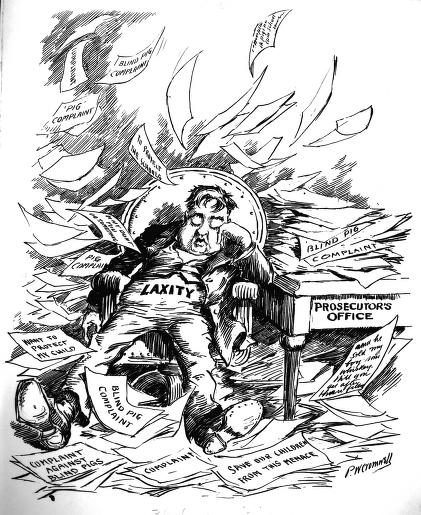 |
|
Chicago was a perfect city for the development of large-scale organized criminal activity. In fact, the origination of the gangster in Chicago is no surprise given the corrupt and lawless environment from which they arose.
During the 1920's and early 1930's, Chicago experienced a revolution in the style and magnitude of the organized crime that it supported. This was due to a vast array of reasons, most of which involve the environment and setting in which this took place. The exponential growth of the city's population that occurred during this time period weakened the ability of Chicago's governmental system to operate effectively. Immigrants, along with people from other regions of the United States, were attracted to the industrial and commercialized Chicago in hope of attaining job opportunities that would improve their lives. Carrie of Dreiser's Sister Carrie serves as an example of the latter group. Chicago's appeal induced a large influx of working class people, resulting in the spread of the city boundaries, and causing population to leak into the growing suburbs. These increases in the city's numbers and span were not matched by an increase in the number of police officers, which rendered Chicago's law enforcement agencies "entirely inadequate" (Landesco, 5).
Another reason why organized crime matured in Chicago was because the city's children were often exposed to criminal activity at young ages. Early experiences of law-breaking among childhood gangs often molded the mentalities of participating Chicagoan youth in a way that prepared them for higher levels of professional criminal activity. Thus "the gangster is a product of his surroundings in the same way in which the good citizen is a product of his environment" (Landesco, 221). . Childhood gangs of poorer Chicago neighborhoods, such as those depicted in Farrell's Studs Lonigan, served as the first 'school ground' and selective screening step in the matriculation of a petty law-breaker into professional gangsterhood. Therefore, in the "less favored areas [in Chicago], in these abiding places of the transients and of the "down and outs", and of the newly arrived immigrant, are to be found the breeding places of the gangs, the Mafia, and of the professional criminal" (Landesco, 6). .
Another reason why Chicago was nurturing of the development of organized crime and the gangster - a form of hustler, or one who was "out to make a fast buck off whoever was standing nearest" (Algren 1951, 16) - is that the hustling nature of the city was present even before it was established. This is a quality that is innate to the city, which Algren acknowledges when he states, "Yankee and voyager, the Irish and the Dutch, Indian traders and Indian agents, halfbreed and quarterbreed and no breed at all, in the final counting they were all of a single breed. They all had hustler's blood. And kept the old Sauganash in a hustler's uproar" (Algren 1951, 16) . Even the earliest settlers and the natives who preceded them were hustlers, as were many Chicagoans during the early 1900s: the period when organized crime was developing and on the rise. Algren even claims that the cities founders, which typically are highly regarded figures, were nothing but hustlers (Algren 1951, 16).
Studs Lonigan is an example of one who is lured by the desire to make an easy living. He is a boy in a lower class family whose job as a painter is failing him due to the lack of work caused by The Depression. After being exposed to the "lavish display of the nouveau riche of the underworld" (Landesco, 210) as represented in the movie "Doomed Victory", Studs wishes to leave his painting career and become a gangster: "this was the real ticket" to get "the dough … rolling in" (Farrell, 541).
Another major influence contributing to the explosion in the volume, success, and level of complexity of organized crime in Chicago during the early 1900s was the initiation of The Volstead Act, which led to the enforcement of Prohibition in 1920 in the form of the 18th Constitutional Amendment.
Some gangs amassed such
unbelievable amounts of money from activities such as alcohol production
and bootlegging that they could afford to buy off most of the police
officers and politicians in the districts of the city in which they
conducted their illegal activities. See the page entitled 'Introduction
to Organized Crime in Chicago' for further discussion.
|



